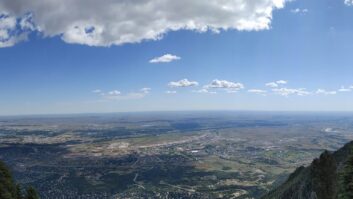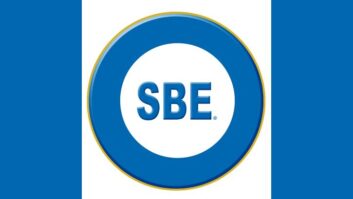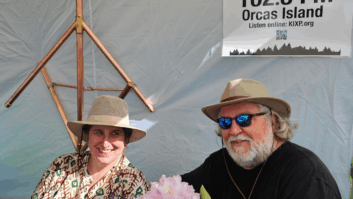The author is an engineer and LPFM veteran.
With the pending launch of more than 1,000 new FM radio stations, there’s been some discussion about whether any holders of these LPFM construction permits may attempt to go on the air as digital HD Radio stations.
There are 814 LPFMs on the air from the first round of LPFM licensing more than a decade ago, according to FCC data. According to Rick Greenhut of HD Radio developer iBiquity, there are no HD LPFMs currently in existence.
This is neither surprising nor difficult to understand given the lack of radios (though this is changing); the cost of gear and licensing (though these are dropping); and the fact that 10 percent of an enterprise resource planning of 100 watts could barely “light a night light” (though a lot of power isn’t always needed to cover your audience).

Nonetheless, after lengthy excited discussions, the board of WDPE in Dover/New Philadelphia, Ohio, to which I am an advisor and consultant, has decided that the station should launch as what might be the first LPFM HD Radio station in the nation.
MULTICAST NIGHT LIGHT?
We’ve spent an extensive amount of time communicating with iBiquity, equipment manufacturers and even the FCC to get a handle of what can and cannot be done. The idea that this little station could explore uncharted territory is interesting and exciting. But to launch it as an HD LPFM with potentially four multicast channels will easily double our cost. Those additional expenditures include the digital licensing, computers and studio gear for the extra three stations/streams, the HD Radio gear (exporter, importer, etc.) and additional music licensing and typical operating expenses. And that’s certainly not a comprehensive list.
Dover-New Philadelphia Educational Broadcasting owns WDPE, and part of our mission statement is to give our students (whose ages can range from 7 to 70+) an experience in a studio environment similar to any “real radio studio.”
Ideally, this exposure might push the students into broadcasting, bringing with them a great education. If future radio is made up of multiple streams (no matter the transmission method), the station should afford students a chance to learn, program and understand how to make all this happen.
It also presents unique possibilities for revenue generation and expanded coverage and programming.
POSSIBILITIES
• Though the LPFM station is and must be noncommercial by current FCC rules, an LPFM with HD Radio capabilities can be commercial on the HD2, -3 and -4 multicast sub channels! This came as a huge surprise; but current rules do not prohibit this, according to Deputy Chief, Engineering, James Bradshaw of the FCC. He emphasized that this doesn’t mean the commission couldn’t change the rules later; but at this time there is nothing prohibiting this. [Ed. Note: The FCC has since corrected this statement; for an important update, see “No Ads on Public Radio HD2 Stations.”]
• Commercial sub-channels could be leased out. You might lease one to, say, an AM station to rebroadcast its signal locally in HD quality! An AM might seek an FM translator; but what if there were no frequencies available? Unlike an FM translator, the AM station could actually use their leased HD (your sub-channel) to broadcast a second local high school sporting event or any secondary program (no need to simulcast 100 percent, or at all). In this scenario, you have the great benefit of a likely long-time broadcaster promoting HD FM on their AM station, which naturally helps your FM and your other HD LPFM channels. [Ed. Note: Again for an important clarification to these policies, see “No Ads on Public Radio HD2 Stations.”]
• Lease an HD LFPM channel to a local religious organization or another for-profit or nonprofit for their use. Maybe a church wants a station or a group of “old, retired commercial broadcast guys” want a station. These sub-channel tenants are going to help you to support your nonprofit and to build the audience of your HD channels, as well as HD Radio technology.
• Maybe you decide to program all three of your HD LPFM “extra channels” yourself. With your additional channels, you certainly can fill many programming voids in your community. Maybe you have a large Hispanic population or a large group of recent immigrants from another country who aren’t speaking English or are still learning? You can use one of your channels for programming to help them learn through programming in their native language. Or maybe you use a channel in some other way that is primarily educational. There are so many possibilities.
• What if you used all your channels to complement each other for a special event? For instance, in Dover-New Philadelphia there is an old and fierce rivalry between local high schools at the end of the football season, in which the Tornadoes take on the Quakers; it is a big event! If you had four stations and this sort of event on the calendar, why not put your play-by-play coverage on your analog and HD1 signal and supplement it with the same play-by-play on the HD2 but with a rock n’ roll soundtrack laid down right under the announcers? (Who has even done a sportscast with a rock n’ roll soundtrack?)
But hey, that’s not all! What about using your HD3 signal to throw someone in the Dover stands and go along the Dover sideline through the entire game and get reactions and talk to people? And go ahead and do the same with your HD4 signal on the New Philadelphia side of the stands? If you have the ability to cover something from all angles simultaneously, why not really do something unique? This could be an interesting “quadracast” in HD. Just imagine how distinctive, fun and interesting it could be.
These are just some of the ideas the board at WDPE has been discussing. The station has a long way to go to get on the air — and a lot of money still left to raise — but the group certainly is thinking outside the box. And one of the great things about working with so many people who aren’t “traditional broadcasters” is the fact that they aren’t afraid to explore new territory.
An important note in using HD secondary channels for commercial broadcasting is the great concern about keeping your nonprofit out of the “for-profit” world. Be sure to consult you station’s attorneys and tax consultants so you keep everything well-defined and legal. Keep in mind that you only have this LPFM CP (or license) because you are a nonprofit organization.
WDPE 102.3 has a CP and a nice location to call “home.” We’re fortunate enough to have our future transmitter co-located with our studio, an excited and energetic board, a community excited about getting a new FM station and a lot of pretty big dreams and goals. The prospect of launching an LPFM station in HD is unique, even if some may say it’s a little crazy.
Comment on this or any story. Email[email protected]with “Letter to the Editor” in the subject line.
For more on the topic of low-power FM, also read Radio World’s eBook “LPFM 2014,” available for free at www.radioworld.com/ebooks.







